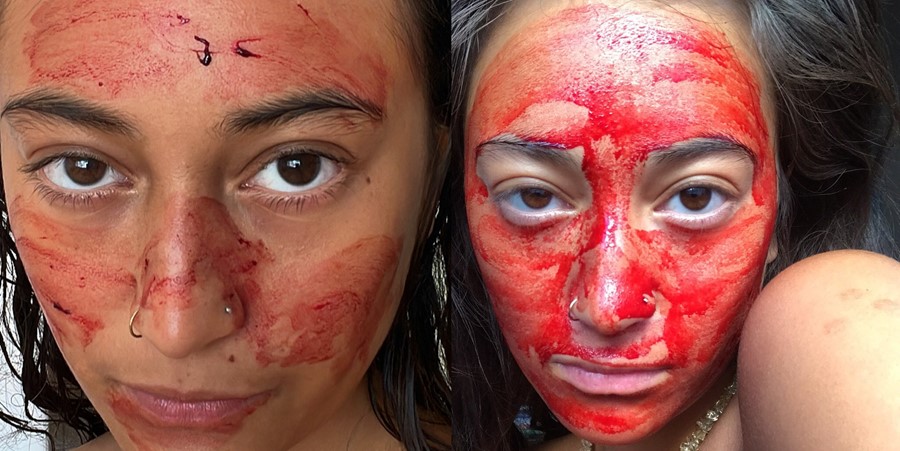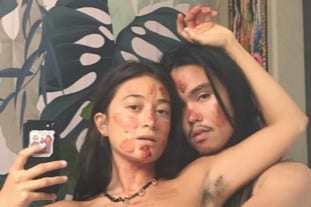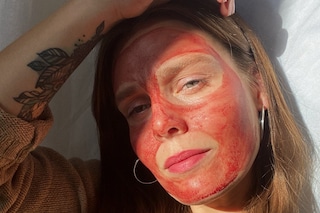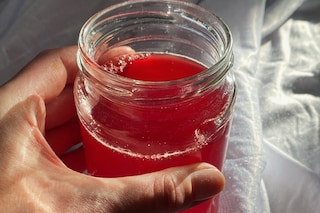A DIY vampire facial might sound unsavoury to some but ‘menstrual masking’ is becoming an increasingly popular skincare alternative
“I will usually put my fingers inside of me and then apply it to my face,” 30-year-old Daniela tells me, earnestly staring down the barrel of the lens on Zoom. We’re talking about moon masking – otherwise known as using your period blood as a face mask.
For a lot of people, their ‘time of the month’ is spent suffering the wrath of mother nature, cursing the pain and refilling hot water bottles like they’re going out of fashion. But for others, it’s believed to be the perfect time to naturally absorb nutrients via your skin, connect to your femininity and give back to the earth. Although it might sound strange, the practice is not actually as niche as you might think – ‘periodfacemask’ videos have 6.4 billion views on TikTok. But why are women doing this, and what does it say about our society if our first reaction is to find it slightly gross?
“For many, it’s shocking to see women connect so deeply with themselves and their bodies,” says Daniela. “When we look into the history of suppression, women’s rights, females touching their genitals, tools for menstruation, there’s so much shame associated. I think it’s so important to explore your vagina and vulva and be curious.”
Daniela, who I found via an Instagram hashtag, lives in Berlin and has been moon masking for four years now. She works as a sex counsellor and relationship coach and posts openly about using her menstrual blood as a mask, and even as plant fertiliser. “It’s really empowering. Our blood is so natural and holy. When I allow myself to really connect deeply with my menstruation, it feels like I’m connecting to the earth and to all my ancestors.”
When it comes to the science behind using menstrual blood on the face, there aren’t many studies supporting its benefits. When I reached out to dermatologists for this article, the general response was discomfort (“I just don’t think it’s one they’d be comfortable commenting on”). Dr Joyce Park, MD, a popular TikTok dermatologist, however, had no problem refuting it in a recent video and begged people not to try it out. “There’s no way you’re collecting blood in a sterile way,” she says. “There’s probably bacteria and sweat and other things in the blood.” You also risk transmitting any vaginal infections you might have onto your face, she adds.
Despite this, culturally the use of menstrual blood is something that has been done traditionally and superstitiously for years. In the Philippines, it is said that if you wash your face with period blood, you will be blessed with acne-free skin during puberty. “My great-grandmother practiced using moon blood face masks, which my mother passed on to me too,” says Kamilla Bello, a 25-year-old artist. “These monthly rituals and practices deeply connect me back to my matriarchal lineage, and it reminds me of the power of all women.”
Bello has been well versed in these rituals for many years and says she used to taste her blood every month in secret as a teenager, as well as smearing it on her face in the shower. “I became more consistent with the practices in my early twenties then started sharing my journey online during the pandemic when I gained more knowledge and understanding”. She also incorporates blood into her regular routine in other ways including, like Daniela, as a fertiliser for plants – “I formed a habit of peeing in my garden instead of using the toilet so I don’t discard my blood” – and for use in rituals.”
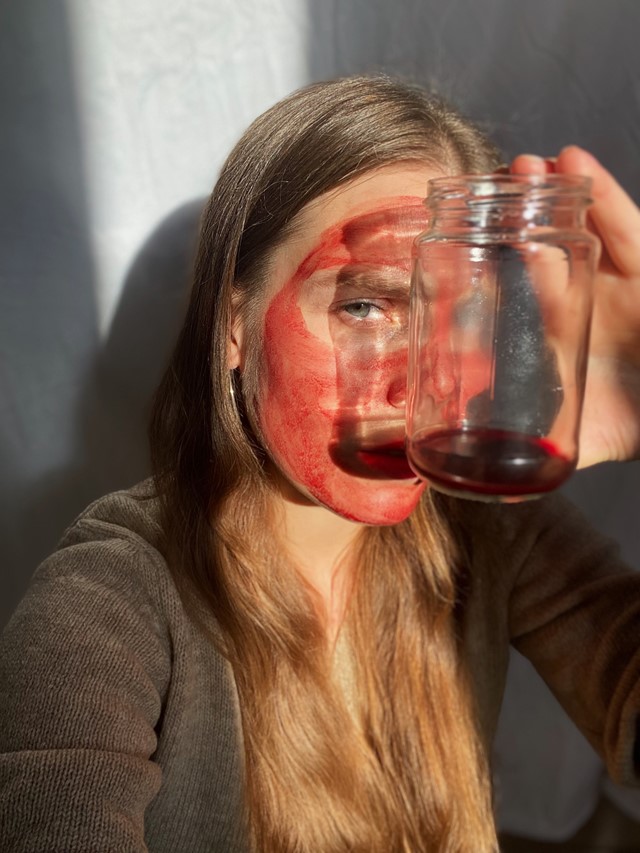
“I also use a cup on the second day of my cycle [when I bleed the most] to collect my blood and use it for ritual purposes – moon blood face masks, anointings for protection, offerings for my womb and ancestral altar, reviving dead or sick plants, etc. For the rest of the cycle, I use period underwear. I soak it in water to squeeze out the blood and infuse a prayer before offering it back to the soil.”
Rituals and connection to your body aside, does using blood in your routine actually have any benefits to the appearance of your skin? Between 1590 and 1610 Hungarian noblewoman (and supposed serial killer) Countess Elizabeth Báthory was said to have bathed in the blood of countless young souls in order to maintain a more youthful appearance. Whether this is true remains a mystery, but fast forward to the modern world and Dr Barbara Sturm has found a more legal way of maintaining your youth with blood. In 2019 there was a two-year waiting list for her famous Blood Cream, and in 2013 the internet was taken by storm when Kim Kardashian released pictures of her vampire facial. A vampire facial, or a PRP facial, is a process where platelet-rich plasma is extracted from your own blood and then micro-needled back into the skin. But with the blood cream alone costing $1,400 and vampire facials similarly pricey, it’s unsurprising some are sticking to the free version.
Lisa Marie, 34, from Germany has been masking two to three times a month for the last year and a half, and says she has noticed a difference in her skin. “I see a change and feel the change. The skin is super, super smooth and also the breakouts disappear… I just pour the blood into my hand and just put it all over my face and let it dry.” Another advocate, 38-year-old Mary Miranda from Chicago, says that she has also seen improvements in her skin texture, feeling that it has become softer and more nourished. “Menstrual blood is healing, has anti-inflammatory properties and is full of rich nutrients and minerals,” she says.

Throughout her life, Mary Miranda suffered from painful periods which she believes were due to a disconnection between her womb and body. Now, her period is her favourite part of the month and she is excited to see her womb health improving after surgery to remove a fibroid tumour and treat endometriosis in 2018. After once being terrified she might have to have a hysterectomy she now says, “I made a deeper commitment to honour, cherish, worship and take care of my womb and menstrual cycles.”
Lisa Marie echoes this sentiment. “Something’s changed within my mindset and how I heal as a woman. It’s made me way stronger having this connection to my womb. It helped me to say no in some situations too. I don't feel ashamed any longer and it’s helped others talk about it too. I think it’s really had a great impact on my life.”
While menstrual masking won’t be for everyone, and is advised against online due to hygiene and safety concerns, these women seem happy and connected to their bodies on a deeply personal level. I can’t lie, their skin really did look radiant too. It’s a practice that probably won’t make it into the mainstream, but these women are right that we do need to make periods less taboo by talking about them and exploring our bodies. If reading about moon masking has done that for you today, then that’s bloody brilliant.
